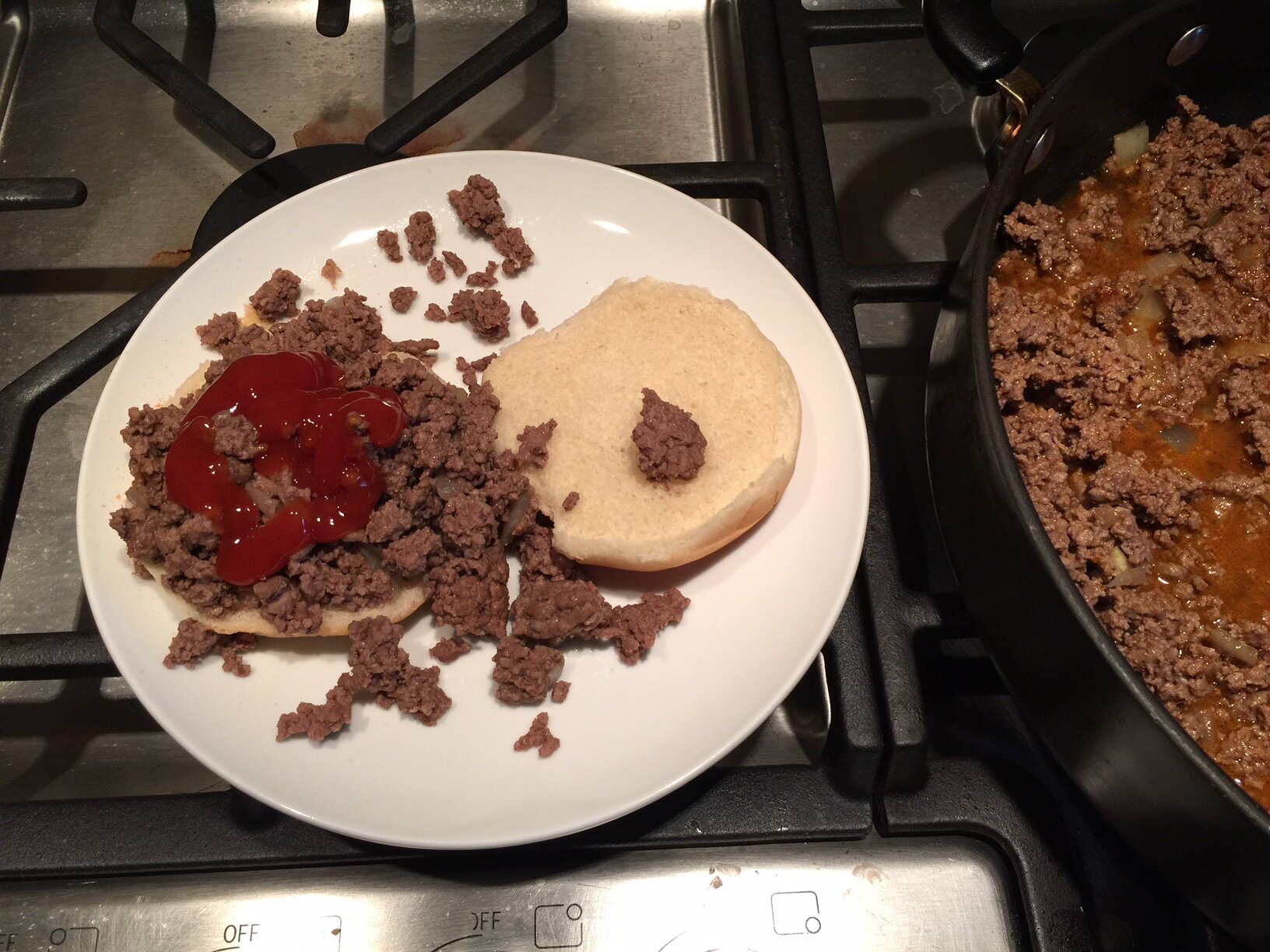Two packages of ground beef were haunting my fridge for a few days. They were sealed in Cryovac plastic, so the meat looked fine. In their Malcolm fridge travels, they had gotten shoved to the back of the fridge where they froze solid for three days. Better them than the lettuce. I brought the hard, flat cubes out to the front to thaw so I could make taco meat for dinner the next day.
A sense of relief washed over me when I opened the packages and dumped the contents in a pan. The meat was fine. As it started to brown, I mashed it into small bits with my potato masher. My actions were shadowed by a memory of Mom doing the same thing years ago when she owned the Snack Hut, a pre-cursor to the modern day food truck. Mom took the snack hut to farm and estate auctions; she sold hotdogs, chips, candy, sodas, coffee, hot chocolate and loose meat sandwiches—Maid-Rites—to the crowd as they wandered by the hut. To prepare for the sale, Mom would cook five or ten pounds of ground beef in a large pot using the potato masher to break up the meat.
I was cooking the taco meat around lunch time, and I was planning on heating it up for dinner. When it was fully browned, I dumped it into a colander with a bowl underneath to drain and catch the fat. That’s when two spoonfuls of beef jumped ship declaring they were actually Maid-Rites; they had no intent of becoming tacos.
If there is anything simpler than tacos to make, it’s Maid-Rites. The mounds of beef sat obediently on the hamburger buns. They held the shape of the slotted spoon I’d used to scoop beef, press it against the side of the colander, and, with a pancake flipping motion, transfer it to the buns. When Mom bought the Snack Hut from a neighbor who herself had operated it for years, the Maid-Rite spoon came with the Hut. It was a long-handled commercial utensil with slotted fingers, and it made a perfectly sized mound of Maid-Rite meat.
Evidence points to a butcher in Muscatine, Iowa, who first cooked this “loose meat sandwich” back in 1926. Fred Angell combined “a special cut and grind of meat and selected blend of spices” together. When a deliveryman tried Fred’s concoction and declared, “This sandwich is made right,” the Iowa-based franchise—with a slightly different spelling—was born. Today there are 32 franchises in the Midwest, the majority of them are scattered around Iowa.
The condiment options Mom served on Maid-Rites were simple: catsup, mustard, pickles, onions, and cheese. Catsup and cheese are my go-to’s. And chips on the side provide a spoon to scoop up the meat that falls out of the bun as you eat it. And no matter how much you cradle your fingers around a white hamburger bun filled with loose meat, their will be last-best-bits remaining on the plate.
Over the decades, home cooks have breathed their own secrets into their versions of Maid-Rites. Since the ground beef yesterday was on its way to becoming taco meat, my Maid-Rites were plain—no salt or pepper. A friend of mine in Des Moines, Iowa, just posted her version of Home Made Maid Rites—Loose Meat Sandwich: An Iowa Tradition. Her Maid-Rite is seasoned five-fold over my basic version: salt, pepper, sugar, mustard, and onion. Some folks add Worcestershire sauce or soy sauce. These ingredients add a unique spin on the original.
There is one ingredient that can’t be added to the meat as it cooks: catsup. Catsup crosses a line. At that point, what was a Maid-Rite becomes a Sloppy Joe. And that loose meat sandwich has questionable origins. Some believe Ernest Hemingway brought the recipe to Florida from Havana, Cuba. Others believe that in the 20’s or 30’s a diner cook in Sioux City, Iowa, first added tomato sauce to loose meat. That cook’s name? Joe. Of course.
Sources:
http://maid-rite.com/history.php
https://illhavewhatsheishaving.wordpress.com/2021/02/21/she-is-cookin-up-new-recipes-in-quarantine/
https://www.culinaryhill.com/loose-meat-sandwich-maid-rite-copycat/


